Best hiking boots for men 2025: trail-tested footwear for every adventure
From lightweight designs to robust options for rugged adventures, discover the top men's hiking boots, offering exceptional comfort, durability, and support for all terrains

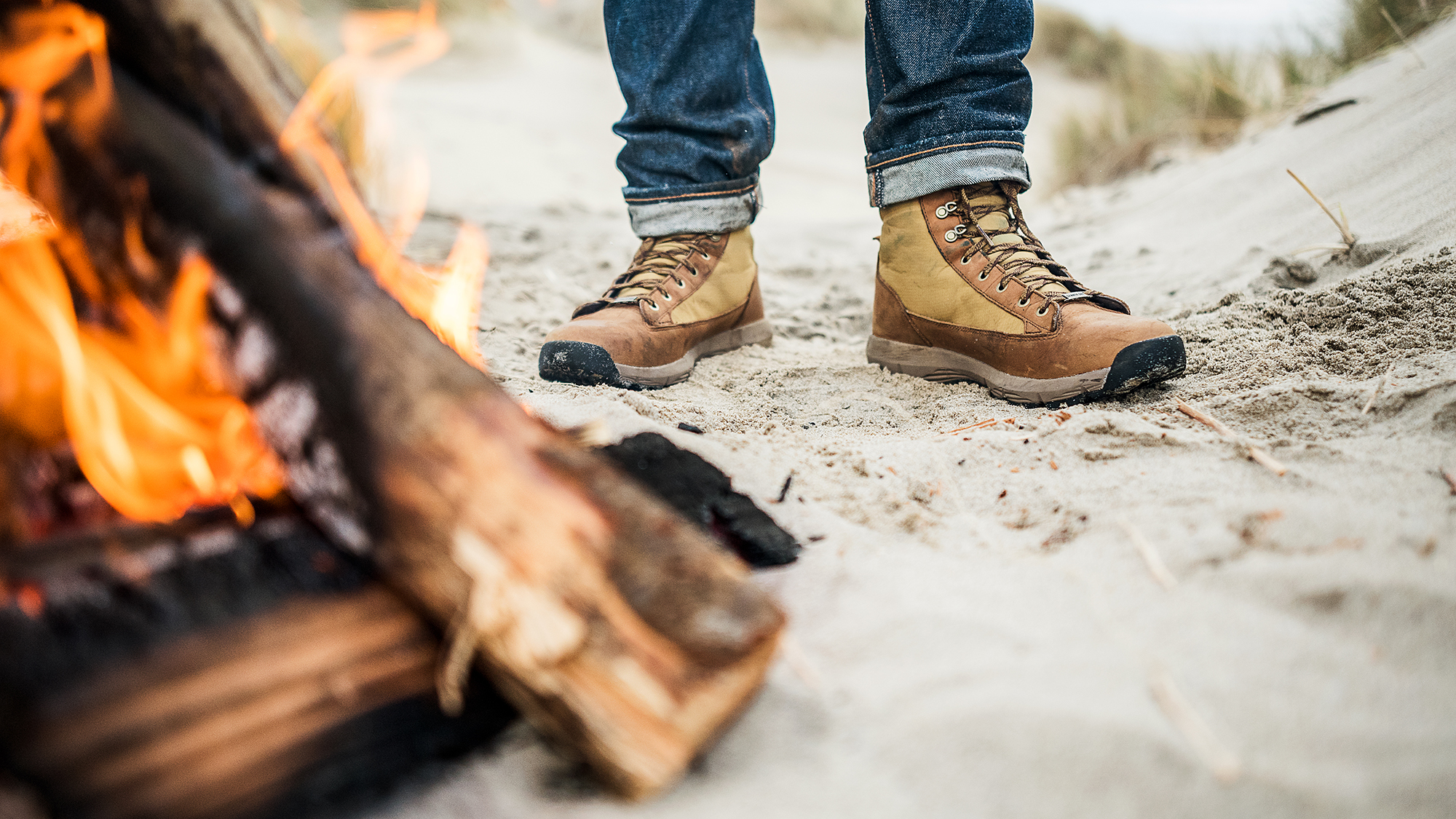
Embarking on outdoor adventures requires more than enthusiasm – it demands the right footwear. Enter the realm of the best hiking boots for men, your trusted companions in conquering nature's challenges.
My testing partners and I sifted through the myriad choices to present you with only the best hiking footwear, offering comfort, durability, and stability. From scaling mountains to strolling through forests, these boots will have you striding confidently.
Check out our companion guide here: the best women's hiking boots for female hikers seeking the perfect fit. For leisurely dog walks or rainy-day strolls, I recommend perusing T3's best walking shoes and best women's walking shoe guides.
My current favourite hiking boots are the Merrell Moab Speed 2 Mid, perfect for anything but hardcore hiking. It's also lightweight and waterproof. Second place goes to the Inov-8 Roclite Pro G 400 GTX V2, which provides support and grip while also being flexible and comfortable to wear for longer hikes. If you need boots that are practically indestructible, you'll need the Danner Mountain Light II.

The Merrell Moab Speed 2 Mid GTX is a lightweight, comfortable hiking boot that excels on moderate trails. Its Gore-Tex lining ensures waterproofing, and the Vibram TC5+ outsole provides reliable traction. While not suited for rugged terrains, it's an excellent choice for day hikes and casual outdoor adventures.

The Inov-8 Roclite Pro G 400 GTX V2 hiking boots offer superb grip, excellent heel and ankle support, and top-level comfort. They aren't suitable for winter conditions or technical alpine terrain, but they're lightweight yet robust, making them ideal for 3-season hiking.
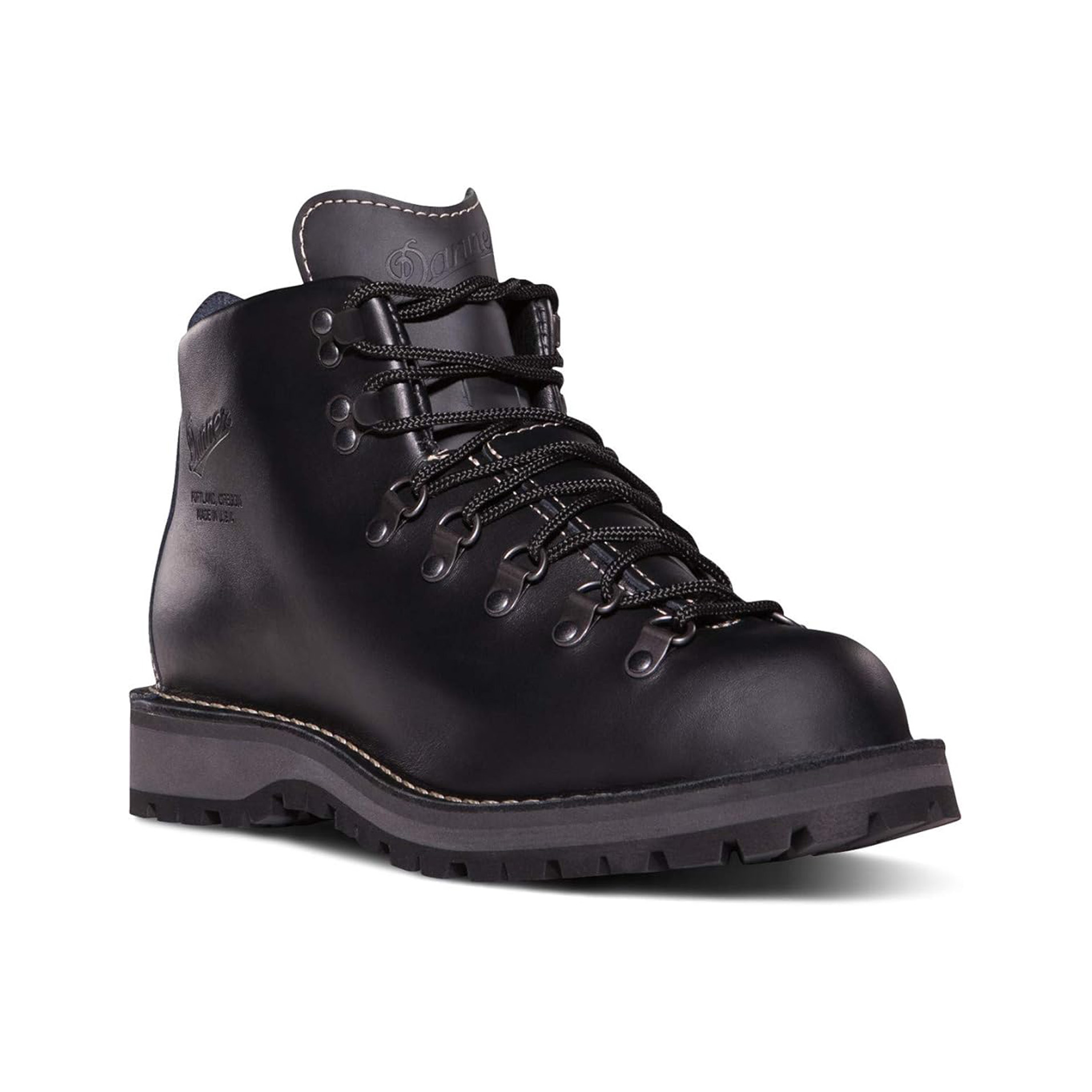
The Danner Mountain Light II boots offer legendary durability, Gore-Tex waterproofing, excellent stability, and a re-soleable design. They are heavy, bulky, and require more care, making them best suited for rugged outdoor adventures.
Best hiking boots to buy right now
Best overall


Specifications
Reasons to buy
Reasons to avoid
We can confidently say that the Merrell Moab Speed 2 Mid GTX stands out as a versatile and comfortable hiking boot. From the moment we slipped them on, the plush cushioning and lightweight design made a noticeable difference, reducing foot fatigue even on longer treks.
The Gore-Tex lining effectively kept our feet dry during unexpected downpours, and the breathable mesh upper prevented overheating on warmer days.
The Vibram TC5+ outsole provided reliable traction on various terrains, from muddy trails to rocky paths. However, we did notice that on slick, wet surfaces, the grip could be improved. The mid-height design offered a good balance between ankle support and flexibility, making it suitable for both day hikes and more extended adventures.
In terms of fit, the Moab Speed 2 Mid GTX provides ample room in the toe box and a secure feel around the midfoot. The semi-gusseted tongue helped keep debris out, although some small particles still managed to sneak in.
Overall, a solid choice for hikers seeking a lightweight, comfortable, and waterproof boot that performs well across a range of conditions.
Read our full Merrell Moab Speed 2 Mid review.
Best waterproof
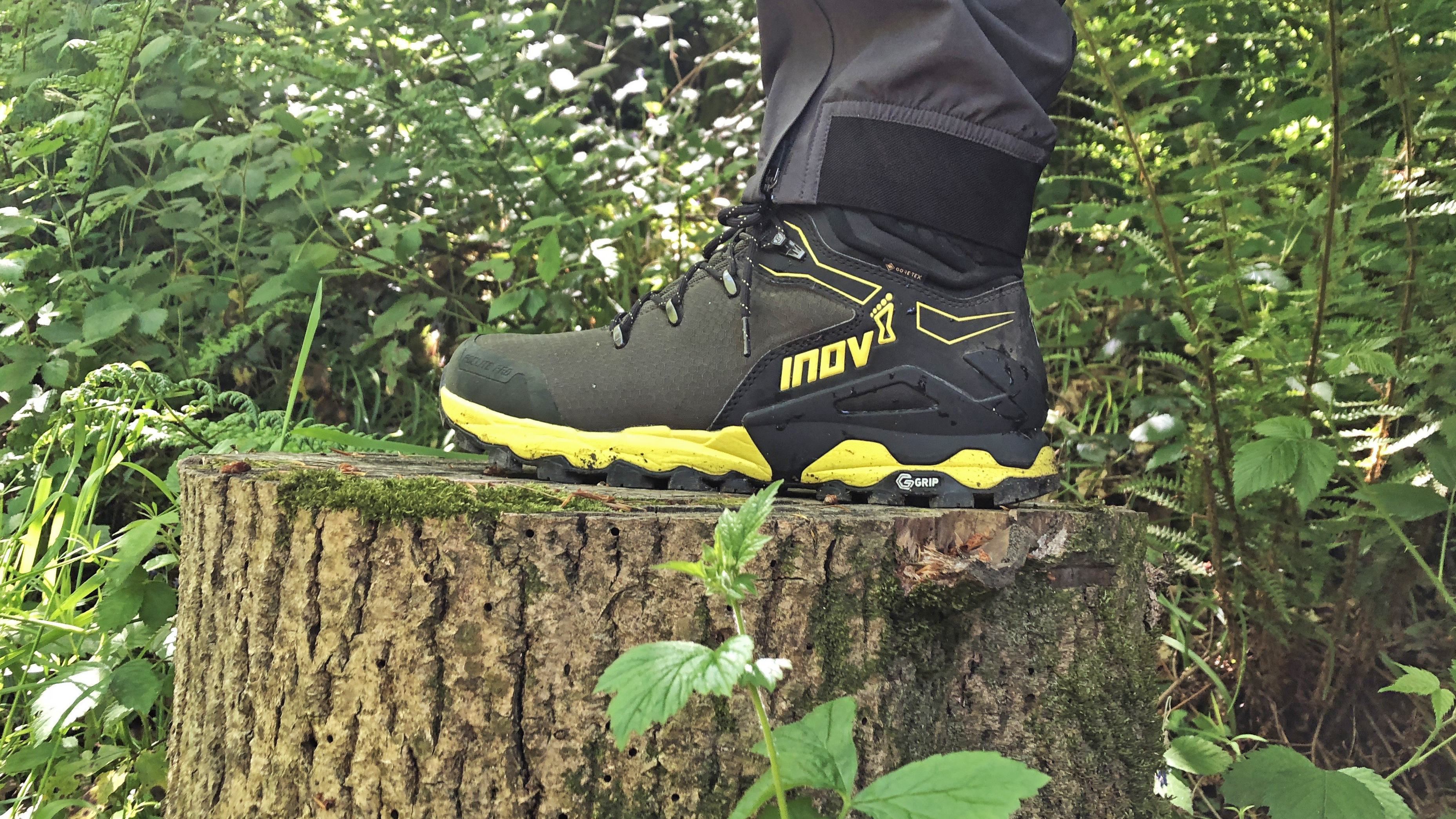

Specifications
Reasons to buy
Reasons to avoid
Crafted to endure the rigours of the great outdoors, the Inov8 Roclite Pro G 400 GTX V2s boast a formidable arsenal of upgrades. From an enhanced heel-lock system to fortified nylon ripstop uppers, every component has been meticulously refined to offer unparalleled protection and support.
Despite their robust construction, these boots maintain a surprisingly lightweight feel, ensuring agility and comfort on even the most challenging terrains. The Gore-Tex membrane keeps feet dry in adverse conditions, while the rock plate offers essential protection against sharp debris.
Tested across diverse landscapes, from Dartmoor to the South West Coast Path, the Roclite Pro G 400 GTX V2s consistently impressed us with their superior performance. Whether navigating rugged trails or traversing stream crossings, these boots inspire confidence with their secure fit and reliable traction.
While not designed for extreme alpine conditions, these boots excel in three-season trekking and backpacking adventures. With their unmatched grip, reinforced construction, and enhanced comfort, the Roclite Pro G 400 GTX V2s represent the pinnacle of hiking footwear, promising years of dependable service on the trails.
Read our full Inov8 Roclite Pro G 400 GTX V2 review
Also consider: the Inov-8 Roclite G 345 GTX excels in quick hikes with exceptional grip on various terrains. With its lightweight design, the boots are barely noticeable during long treks. Features like the bellows-style tongue and low heel enhance comfort and support.
Most durable
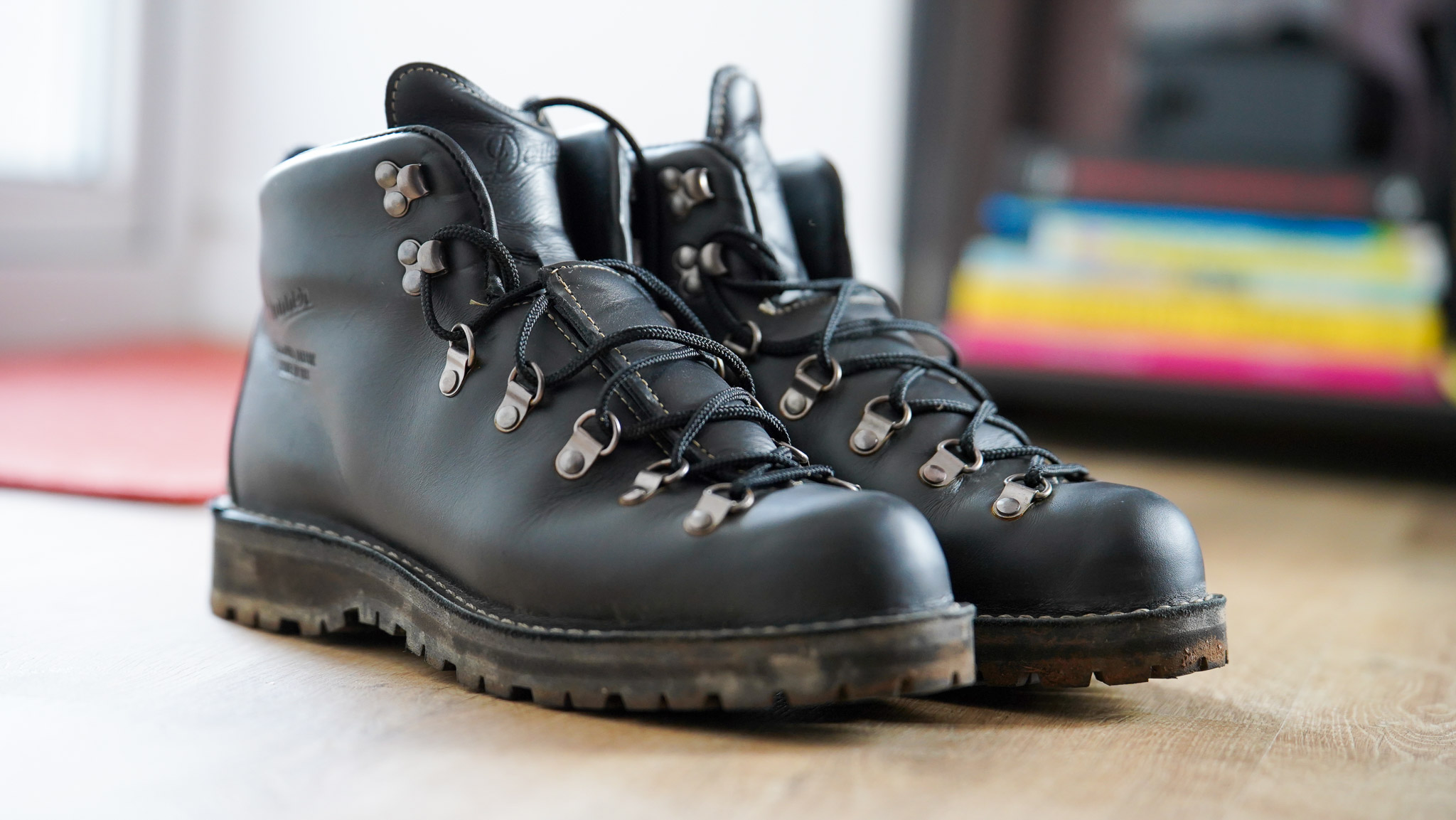
Specifications
Reasons to buy
Reasons to avoid
The Danner Mountain Light II hiking boots offer a blend of retro style and robust construction. Crafted from a single piece of leather with a Gore-Tex lining, they promise durability and waterproofing for muddy terrains. Utilising Danner's stitchdown construction, these boots can be recrafted, extending their lifespan significantly.
Despite their weight, the boots are surprisingly comfortable, with ample toe room and a supportive lace-to-toe system. On walks through Wells and the Mendip Hills, they provide stability and traction, thanks to the Vibram Kletterlift outsole. Their waterproofing holds up well, and while they may feel stiff initially, they offer a blend of modern performance and traditional craftsmanship.
Although not the lightest option, the Mountain Light II prioritises longevity, making them a sustainable choice for outdoor enthusiasts seeking durability over agility.
Read our full Danner Mountain Light II review.
Best backpacking

Specifications
Reasons to buy
Reasons to avoid
The Lowa Renegade Evo GTX Mid builds on a legendary hiking boot design, adding modern refinements for improved comfort and performance. We appreciated the premium Nubuck leather upper, which not only looks great but also provides excellent waterproofing. The fit felt secure, thanks to a well-designed heel cup and locking lace eyelet that kept my foot in place on uneven terrain. While they were comfortable from the start, we found a short break-in period necessary, especially around the midfoot.
On the trail, the Vibram Rene Trac outsole offered fantastic grip, performing well on both wet and dry surfaces. The boot’s stiffness added stability, but it also made them feel a little firmer underfoot compared to softer, more flexible alternatives. In cooler, wetter conditions, they excelled, but breathability could be better for warmer hikes.
One potential downside is the non-replaceable sole, which could limit long-term sustainability. Still, for hikers who prioritise durability, protection, and year-round versatility, the Renegade Evo GTX is a solid choice that delivers confidence-inspiring support on demanding trails.
Read our full Lowa Renegade Evo GTX review.
Best grip


Specifications
Reasons to buy
Reasons to avoid
Another impressive all-rounder is the Berghaus Explorer Trek. This versatile design is perfect for those who are getting more ambitious with their hiking adventures and want to graduate from a more basic boot. My colleague tested out the female version and found these boots delivered outstanding grip, even on wet rock or muddy ground, thanks to well-placed lugs.
These boots are also ready to wear straight out of the box, with deep, cushiony insoles that mould to your feet over time. A robust suede upper with a Gore-Tex liner will keep your toes dry even in the worst weather. Note: we found these fit on the narrow side, especially around the toes.
Read our full Berghaus Explorer Trek review.
Make sure you don't miss a deal by checking our Berghaus discount codes page before you buy
Best technical
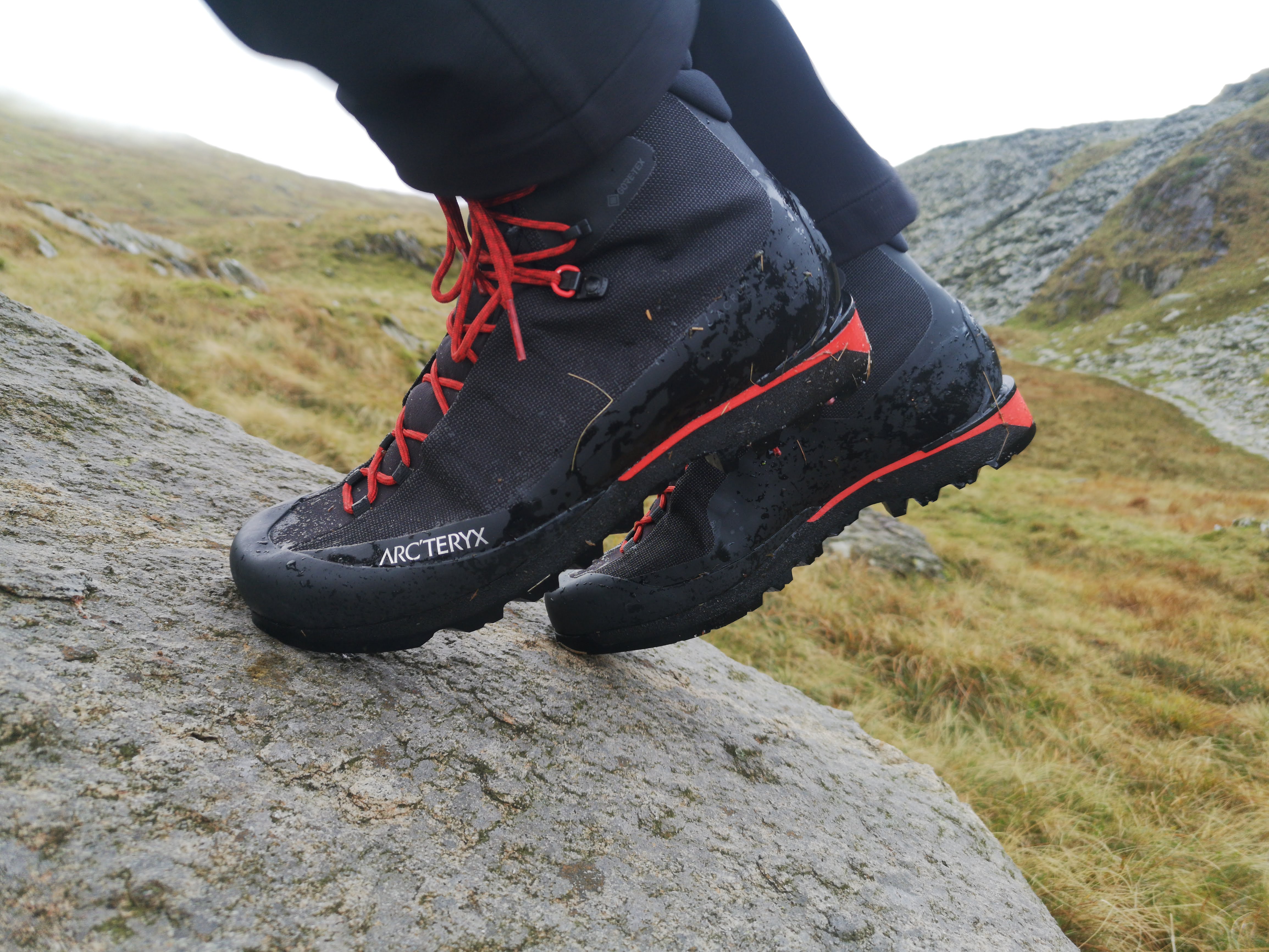

Specifications
Reasons to buy
Reasons to avoid
Crafted primarily for three-season alpine conditions, the Acrux LT GTX strikes a delicate balance between protection, technical prowess, and durability while maintaining an impressively lightweight profile. Its precise construction offers heightened sensitivity and outstanding climbing performance, whether with or without crampons.
The boot's stiffness renders it exceptionally adept on steep terrain, instilling confidence during edging manoeuvres, while the highly tapered toe lends itself well to snug fits into small rock pockets. Its front climbing zone beneath the toe provides reliable traction across various rock surfaces, making it a preferred choice for technical climbing and scrambling. The stiffened midsole ensures seamless compatibility with crampons for snow and ice environments.
During testing, a few drawbacks surfaced, including minimal cushioning and a narrow fit, which may not accommodate individuals with wider feet or those who prefer a roomier toe box. While the Gore-Tex lining offers some insulation, the fabric uppers may not provide the warmest experience, necessitating precautions against numb toes in colder conditions.
Read our full Arc’teryx Acrux LT GTX review.
Best for speed hiking
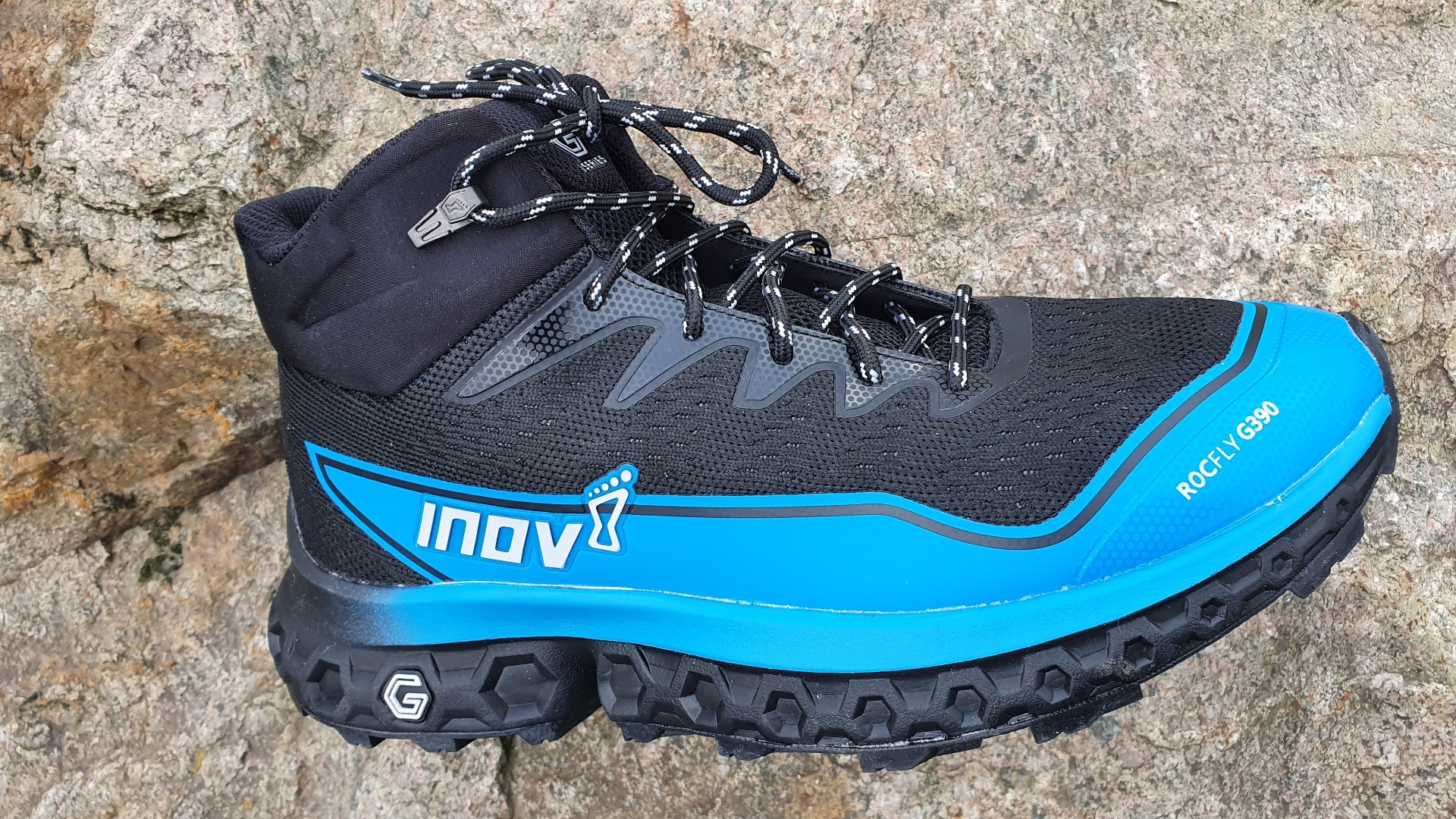

Specifications
Reasons to buy
Reasons to avoid
The Inov-8 ROCFLY G390 is a new hiking boot for AW21 from UK-based Inov-8, and features the company’s acclaimed Graphene-Grip outsole. The Graphene isn’t just technology for the sake of it, adding durability and strength to a very grippy sole compound (Inov-8 claims a 50% improvement on strength and wear). Inov-8 has rigged the deck in their favour by adding 35 multi-directional 4mm deep lugs to the sole too, their distribution specifically designed to prevent debris from gumming them up.
The midsole also features Graphene, this time in the shape of G-Fly foam, its presence being a first for hiking boots. The knitted upper conforms to the foot, allowing the foot to swell over longer distances without requiring adjustment, as well as offering excellent breathability. Coming in at a stupidly lightweight 390g, the Inov-8 ROCFLY G390 has already been used to break distance and speed records, namely James Forrest’s new record time for a solo and self-supported hike of Great Britain’s National Three Peaks.
Read our full Inov-8 ROCFLY G390 hiking boot review.
Best cushioning


Specifications
Reasons to buy
Reasons to avoid
The Salomon Predict Hike Mid is a boot with plenty of bounce. In the manner of a Hoka One One model (although without the head-turning looks), these really do bounce you onwards with each stride, especially on harder surfaces. The sole unit is fairly still but flexes enough to contribute to the bouncy ride. The build quality is solid, with the mid-height cut delivering ankle support, and the Gore-Tex keeps rain at bay effectively.
The lacing system keeps everything securely in place, and although the laces can be slick, to begin with, they do bed in quickly. On the down-side, the tester found they came up narrow – if you've got wide feet, you might need to go a half or even full size bigger than normal. And while they didn't have this issue, some other customers reported debris getting stuck inside the layers of the boot.
Read our full Salomon Predict Hike Mid review.
Reviewer panel

Matt looks after all things outdoors on T3 and can often be found scaling hills and mountains in his free time, from Snowdon to Chamonix and beyond. He tested many hiking boots in this roundup. He works with some of the most renowned outdoor experts to determine which are the best boots people can (and should) buy.
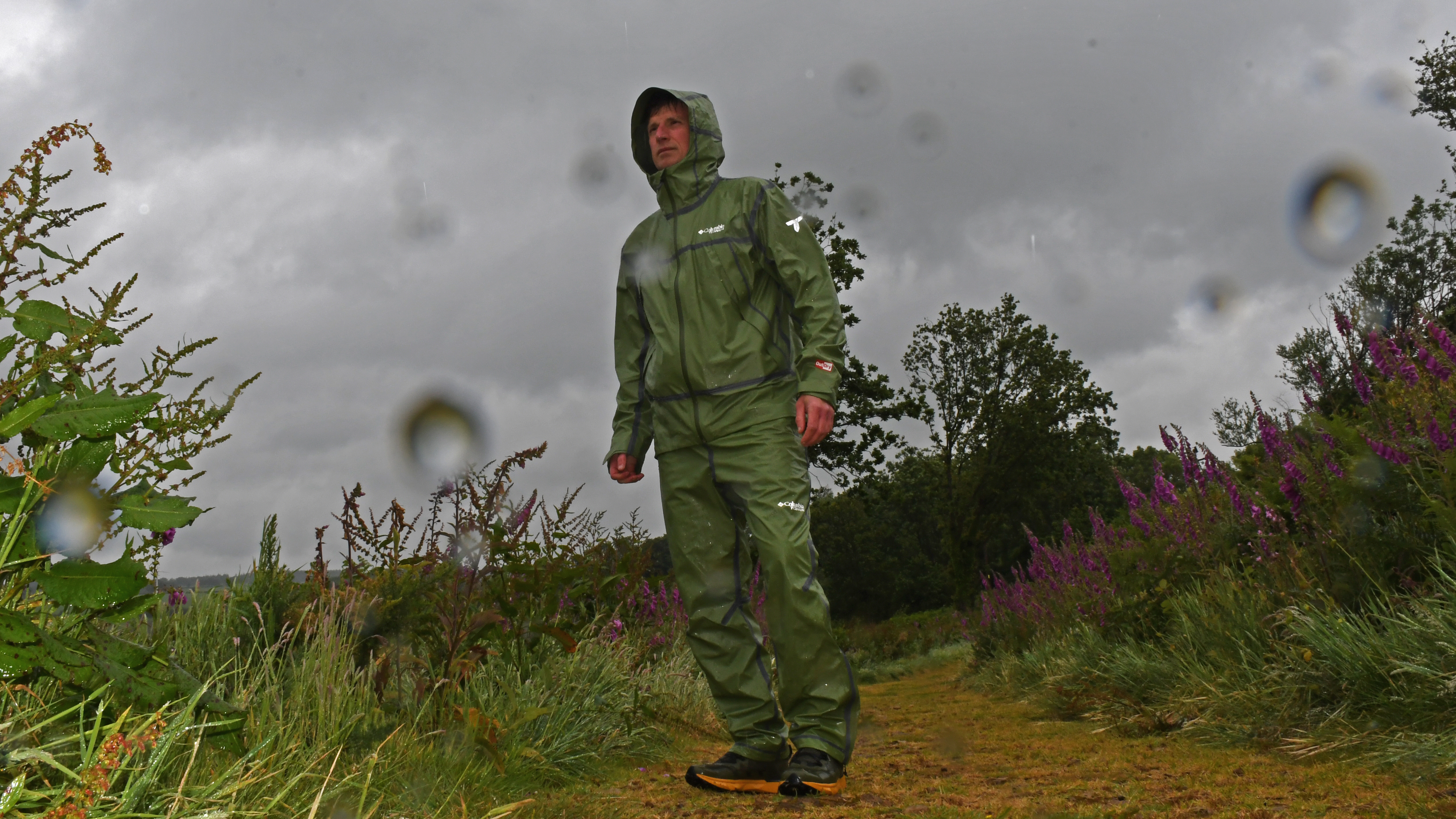
Pat is a British journalist, author, and editor specialising in outdoor adventures and gear. With over two decades of experience, he has contributed to publications like National Geographic Traveller, T3, and Countryfile. His books include 100 Great Pub Walks and Caving, Canyoning, Coasteering. His hands-on approach and engaging storytelling make him a respected voice in outdoor journalism.

Matt is a UK-based freelance photographer and writer specialising in outdoor, lifestyle, and travel content. His work has been featured in publications such as The Gear Loop, Cyclist Magazine, and Hidden Scotland, and he has contributed photography to The Telegraph and The Caterer.
Honorable mentions
We put dozens and dozens of hiking boots through their paces every season, and only a select few will make it to this guide. The ones that don't make the cut aren't necessarily bad; it's just that we like not to feature multiple boots that are good for a certain purpose (e.g. there is only a lightweight hiking boots option listed).
The AKU Conero GTX NBK didn’t make our main list this season, but it’s easily one of the best traditional leather boots we tested. Built with a full-grain nubuck upper and lined with Gore-Tex, the Conero is a heavyweight hiking boot in the best sense – sturdy, protective, and built to last. While it might be overkill for casual countryside strolls, it truly shines on tougher, technical hikes where stability and durability matter.
The Vibram Fourà outsole and robust midsole provide excellent grip and underfoot support, even with a loaded pack. I wore these boots on a demanding multi-day hike and appreciated the rock-solid construction and ankle support throughout. That said, they do need breaking in, and their relatively high weight may put off fast-and-light hikers. Still, if you're after a classic trekking boot that feels bombproof and looks beautifully made, the Conero GTX NBK deserves your attention.
One of the boots we tested and thoroughly enjoyed was the Vivobarefoot Pilgrim. It isn't on the list because it's more of an urban exploration boot rather than proper hiking footwear. It looks super stylish and provides some protection, though, so if that's what you're after, you should check them out. Otherwise, the Vivobarefoot Tracker Decon FG 2, listed above, is a brilliant barefoot-style boot for hiking.
Another Vivobarefoot option for winter hikes is the Vivobarefoot Gobi Hiber. It's the winterised version of the fan-favourite Gobi Boot and adds full thermal lining without compromising flexibility. I love these boots and took them with me skiing in Verbier. They might not be suitable for freezing temperatures, but they should be able to handle anything less than arctic.
The Danner Mountain 600 Evo shines as a lightweight, comfortable hiking boot that’s perfect for day hikes, casual trekking, and mixed urban-to-trail use. It has a softer, more flexible feel and Vibram Fuga outsole. It lacks ankle support, but the sustainability factor (recycled materials and recraftable sole) makes it appealing to eco-conscious buyers.
How to choose the best hiking boots for you
The two key things to prioritise when hunting for the best hiking boot for you: finding the right boot style for the activity and getting a really good fit for your individual foot shape. The fit will vary by brand and style of boot, with some coming up much narrower (or broader) in the midfoot than others.
It's absolutely vital to try boots on before embarking on an expedition, and usually wearing them around the house before removing the retail labels is enough to show up any hotspots that could lead to painful difficulties further down the line. Head to our guide to how to break in hiking boots for some top tips (and our guide to how to treat blisters if the worst comes to the worst).
Although there are some stunning and super-technical hiking boots that might catch your eye, make sure you actually need the features they're offering before you shell out. Super-stiff mountain boots can be a trial on casual Sunday strolls, but equally, rocking up in trainers for a snowy ascent is a terrible idea. Generally, though, the extra support of a good hiking boot will see you happily meander wherever the fancy takes you.
The golden rule is to buy what fits and a model that suits your main use. In terms of brands, at the more robust end of the spectrum, La Sportiva, Scarpa, Mammut, Lowa and Aku all build boots that will shame a tank, while at the lighter, summery end, Teva, Keen and Salomon bring considerable expertise to the table.
How we test the best hiking boots
Testing hiking boots involves several steps to ensure their durability, comfort, support, and performance in various conditions.
Durability is assessed by subjecting the boots to rugged terrain, including rocky trails, muddy paths, and abrasive surfaces. This helps evaluate the resilience of materials such as leather, rubber, and stitching against wear and tear.
Comfort is another crucial aspect, tested through prolonged wear on different types of terrain. Testers assess factors like cushioning, arch support, and the fit of the boots to ensure they remain comfortable even during extended hikes.
Support is evaluated by examining the stability of the boots on uneven terrain and assessing features like ankle support and midsole stiffness. This helps determine how well the boots protect against twists and sprains while providing adequate support for carrying heavy loads.
Performance testing involves assessing the boots' traction on various surfaces, including wet rocks, loose gravel, and slippery slopes. Testers also evaluate the boots' waterproofing by submerging them in water and walking through puddles to see if any moisture seeps in.
Additionally, testers consider factors such as breathability, weight, and flexibility to determine the overall performance of the boots in different hiking conditions.
FAQ
What are the best hiking boot materials and technologies?
Construction-wise, old-school full leather hiking boots are rare beasts these days, not only because of cost but also because they need months of breaking in before extended use. Modern boots use a range of synthetic materials in addition to leather panels, so are much softer out of the box. Indeed, the latest thermo-fitted/NestFit models are pretty much ready to rock straight off the shop floor, although wearing them around the house or to and from work is still a good idea before leaving on a major expedition.
Outdoor tech has come a long way in recent years, with huge strides being made in the way the best hiking boots are designed and built, from tech geared to keeping your toes warm in sub-zero conditions to innovations that help you stay upright on the most treacherous and slippery trails. Some of the most useful technologies and features include Vibram Megagrip (enhanced traction), Gore-tex (improved waterproofing), NestFit (bio-mapping for comfort), Thermo Tech Application technology (better support), and CleanSport NXT (odour control).
Do I need specific boots for hiking?
Most modern hiking boots include a waterproof membrane, which will be useful when you head off the beaten track. In addition, hiking and mountain boots often incorporate a raised 'rand', a rubber buffer over the leather of the boot nearest the sole, which protects the boot from sharp stone cuts when walking across scree (small loose stones that sometimes cover slopes).
Hiking boot soles will also be much stiffer than street shoes/boots to shrug off rough surfaces, incorporating aggressive tread for better grip on wet grass, moss or mud and often cleverly-placed sticky rubber areas for extra grip on wet rock. That stiffer sole gets a grade from B0 to B3-B0 and below, making them fine for casual summer hikes but too flexible for crampons. Meanwhile, B1-3 boots offer increasing levels of stiffness to accommodate increasingly technical rigid crampon use.
This might sound excessive for the causal walker, but if you’re hill walking in the UK winter, opting for a stiffer crampon-compatible walking boot is highly recommended, as conditions can change fast. A lighter-weight alternative is a walking shoe. Check out our walking boots vs walking shoes explainer if you're deciding between the two.
What hiking boot features do I need?
In a nutshell, you're looking for boots that are luxuriously comfortable, unstintingly waterproof, heroically breathable, tank-like in their ruggedness, and offer as much grip as Spider-Man's socks. It’s essential to get the right rating for your hiking boot – wearing B3 double-boots for summer trekking will be hell, as will attempting the likes of Indicator Wall in Converse. Overall, you’re looking for ankle support from a boot – which in the hills can be vital when a stone shifts underfoot – but also a comfortable fit.
A snug (not tight) fit minimises heel lift, as well as assorted blisters at ‘hot spots’ like heels and toes (although we'd always recommend a pair of the best hiking socks for an added layer of protection). When seeking out winter boots (B1+), this is particularly important, as a loose fit will see your toes smash into the toe box when using crampons, and the stiffer sole will also exaggerate heel lift unless the heel pocket fits just right.
The accepted wisdom is to try on hiking boots in the afternoons, once your feet have expanded, and take a range of socks to try them on with. Thin office socks are helpful to show up any obvious shape mismatches and pressure points before moving on to your preferred walking sock. Do experiment with sock-fit as well as boot fit, as even the most expensive socks are cheap compared to boots, and some of the more specialised socks can make a real difference to your hiking comfort.
Get all the latest news, reviews, deals and buying guides on gorgeous tech, home and active products from the T3 experts

Matt Kollat is a journalist and content creator who works for T3.com and its magazine counterpart as an Active Editor. His areas of expertise include wearables, drones, fitness equipment, nutrition and outdoor gear. He joined T3 in 2019. His byline appears in several publications, including Techradar and Fit&Well, and more. Matt also collaborated with other content creators (e.g. Garage Gym Reviews) and judged many awards, such as the European Specialist Sports Nutrition Alliance's ESSNawards. When he isn't working out, running or cycling, you'll find him roaming the countryside and trying out new podcasting and content creation equipment.